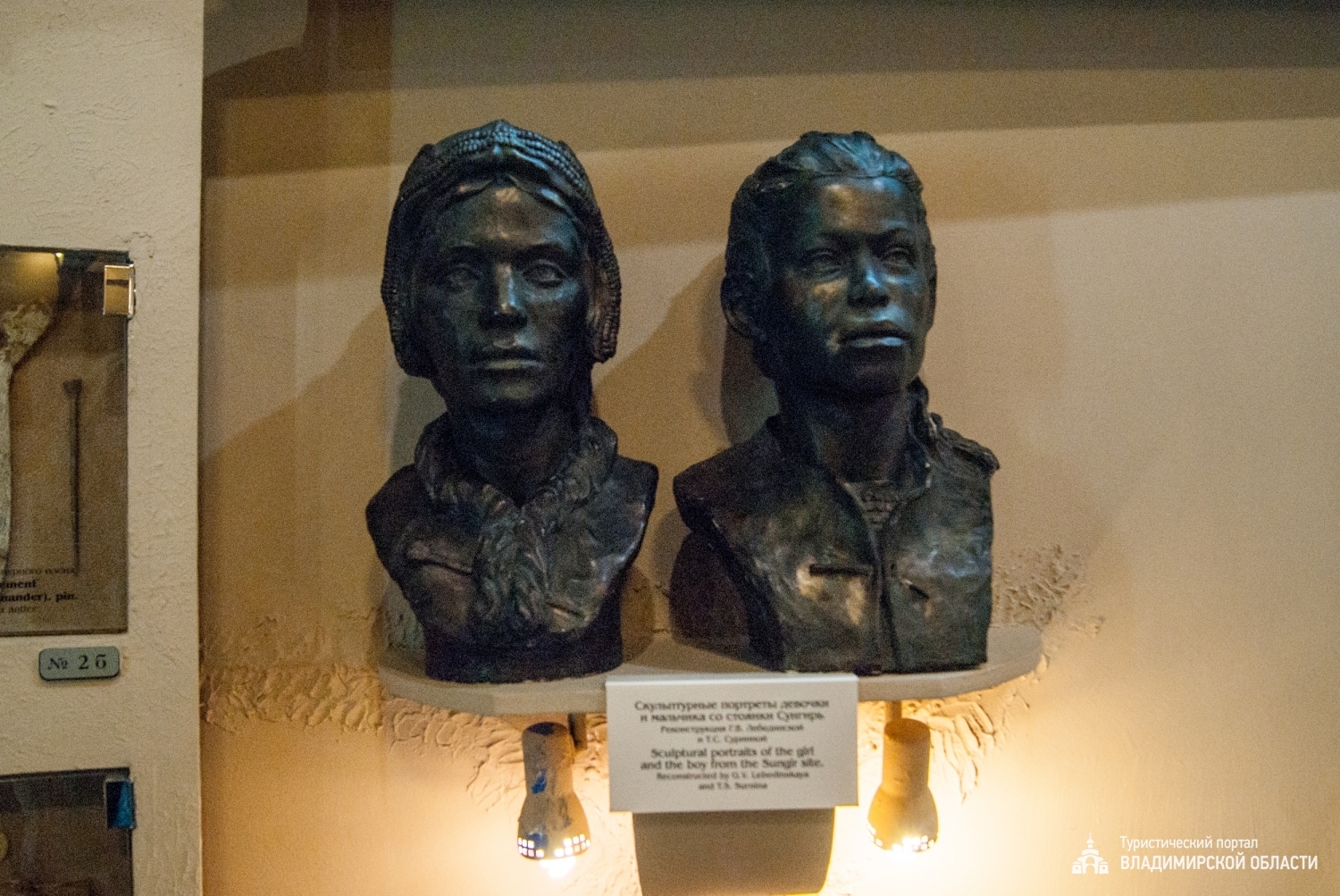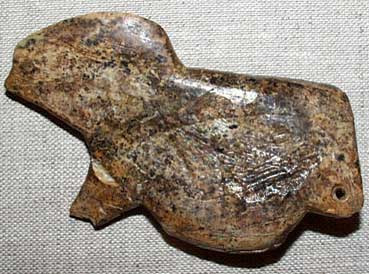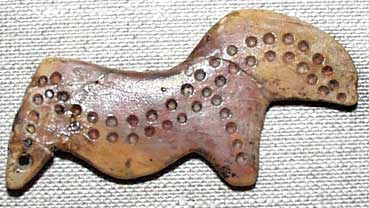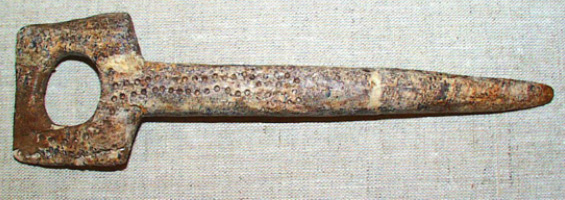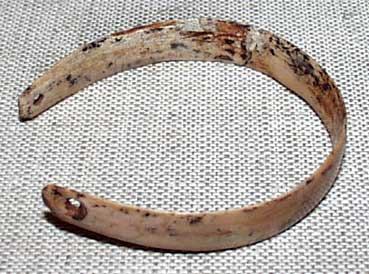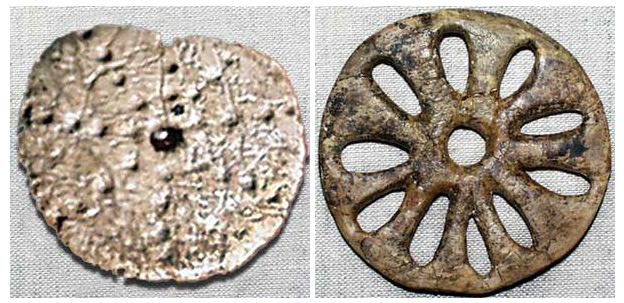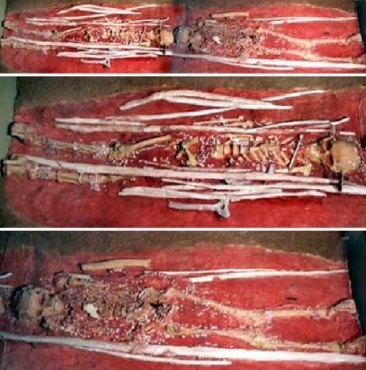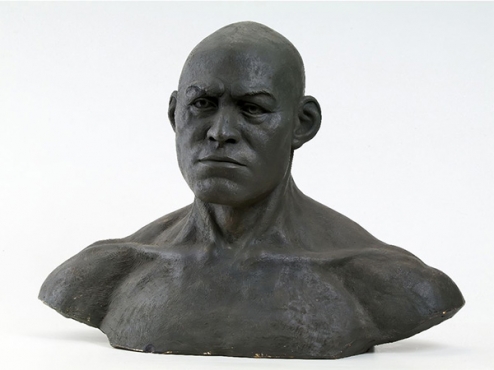Sungir - Upper Paleolithic Site of an Ancient Man
GPS: 56.176226, 40.502786
Sungir is a unique archaeological monument of world significance, which is known as the most northern in Europe settlement of ancient people of the Late Paleolithic (ancient Stone Age), which existed approximately 25-30 thousand years ago. However, disputes still remain about the age of this Upper (Late) Paleolithic site, which in recent studies is being corrected – almost 35 thousand years ago. In fact, the first people on the territory of the Vladimir region lived in Sungir, who came here from more southern territories (possibly from the banks of the Don) during the warming of the climate and the retreat of the glacier to the north. In those days there was tundra and were mammoths here. The basis of the economy of ancient people (Cro-Magnon) was a collective hunting for large herd animals and gathering.
The site Sungir is located on the eastern outskirts of Vladimir, to the right of the M-7 highway, at the confluence of the Sungir creek and the Klyazma River, which explains its name. For the first time it was discovered in June 1955 during construction works: the driver of the excavator came across huge bones, which, by identification of scientists, turned out to be mammoth bones. A year later, in the summer of 1956, an archaeological expedition led by O.N. Bader (1903-1979), a well-known archeologist, a major specialist in the stone and bronze ages, discovered in Sungir the remains of the destroyed houses of an ancient man (up to 10-15 meters in length), bonfire places and hearth pits. Thousands of objects of material culture were found – arrowheads, flint scrapers, incisors and a lot of bones of various animals, on which the inhabitants of Sungir hunted (mammoths, wild horses and deer, cave lions, etc.).
The most famous find was the "Sungir hobby-horse" – a small zoomorphic figure in the form of a horse (length 5.6 cm, thickness from 4 to 1 mm), carved from a mammoth tusk, decorated with a dot pattern and painted with ocher. Until now, scientists cannot say definitely whether the ornament had some semantic meaning or simply performed an aesthetic function. The image of the horse was schematic, made in profile, each pair of legs was a wedge-shaped ledge. A through hole (2-2.5 mm) was drilled on the back leg, the surface of the figure was carefully polished, which indicates its use as a pendant-amulet. The front part of the horse's head is sharpened like a blade, which allows one to assume the possible production function of the pendant. "Sungir hobby-horse" is also known as an actual symbol of this world-famous site of an ancient man.
The most striking event in the study of the site Sungir was the discovery of rare paleontological burials in the summer of 1964. Archaeologists have established that the "Sungirians" used a curious funeral rite: first they put coals and ashes in a pit, and then they covered them from above and the bottom of the grave with ocher. Probably, the coals symbolized a bonfire that would warm the deceased, and ocher symbolized the blood giving life.
The main burial (in studies used the designation Sungir 1 - S1) belonged to an adult male 55-57 years, probably the leader of the tribe. It is surprising the powerful physique of S1, who was at least 178 cm tall and wider in the shoulders (the length of his collarbone is 190 cm) than a modern man. The skeleton was thickly covered with ocher. Numerous beads (more than 3500) lay on it, carved from the mammoth's tusk, once sewn on clothes. Their arrangement made it possible to reconstruct the suit: a shirt without a cut, pants connected with shoes, perhaps a raincoat, a hat, richly decorated with beads and drilled fangs of arctic fox. Clothing of the Sungir people reminds modern clothes of northern peoples. On the hands of S1 there were two dozen thin bracelets from the tusk of a mammoth and a string of beads. This Upper Paleolithic burial is considered one of the richest. Next to S1 lay a spear of mammoth tusk, 2.4 meters long, completely straight. Hence, the ancient people possessed the technique of straightening tusks.
Outstanding anthropologist M.M. Gerasimov restored the sculptural portrait in accordance with the skull of S1. In the opinion of the scientist, this was a fully formed image of a modern man of the Caucasoid type.
The 1969 season brought new sensational discoveries in Sungir. A unique burial of two children lying head to head (S2 and S3) was found. This burial ritual is associated with the cult of fertility. They were buried in the center of the dwelling in the place of the hearth, and were also strewn with ocher and beads. According to scientists, they were a boy 12-13 years old (S2) and a girl 9-10 years old (S3). Their clothes were covered with 7500 beads. A flint knife and a bone needle with an eye were inserted into S2's hand. The hat was decorated with a crown made of fangs of arctic fox. On the chest lay a figurine of a horse, similar to that found in 1956, and under the left shoulder – a carved image of a mammoth. On S3 there was a head bandage adorned with bone beads, at the waist – a belt densely lined with fangs of polar fox. In addition to the ornaments, spears (1.66 m and 1.1 m) were found in the burial, carved from a single straightened mammoth tusk, darts, daggers, slotted disks, probably of ritual significance. Such a rich burial spoke of not less high social status of children (S2 and S3) than the previously found burial of a man (S1).
In accordance with the skulls of S2 and S3, sculptural portraits of Sungir children were reconstructed in 1979 by anthropologists T.S. Surnina and G.V. Lebedinskaya, students of M.M. Gerasimov.
For almost half a century of archaeological research of Sungir, more than 5 thousand square meters of cultural layer, located at a depth of 2.7-3.5 meters, have been excavated – almost half of the estimated area of the settlement. The richest collection of more than 70,000 different items has been received. In total, the remains of 6 people were found. Probably, the Sungir site existed or was regularly visited by people for 2-3 thousand years.
Excavations of the Sungir site are periodically renewed. The most notable were the works of 2005, conducted by Nikolai Ottovich Bader, the son of an outstanding archeologist, O.N. Bader, the founder of the archaeological research of the ancient site. N.O. Bader concluded that the site of Sungir was used by nomadic hunters who moved after the streams of migrating reindeer. In 2005, three reconnaissance excavations (pits) were laid in a new area, more than 5 meters deep. In the ancient layer up to 70 thousand years old a unique find was discovered: a bone fragment of of an unknown animal with traces of human impact.
In early October 2017, the journal Science published the latest results of studying of the remains of 6 people found in Sungir in the 1960's, by a group of scientists from Denmark, Russia, Portugal, Switzerland, the United States and other countries. New technologies have refuted the established theory about the gender of the Sungir children: they were both boys. S2 and S3 were cousins or even second cousins to each other. Scientists believe that the children, as well as the Sungir man (S1), came from one tribe, which later was genetically divided into several independent groups. Ancient people, to whom the "Sungirians" belonged, in contrast to the extinct Neanderthals, organized large unions of several tribes of 200-250 people in each, due to which the genetic diversity developed.
By micro-changes in the shape of bones, anthropologists found out what the people buried in Sungir were doing. The man S1 for a long time pricked stones, firewood or tusks. The boy S3 often repeated the same action: sitting on his knees, he turned something with his right hand. In addition, according to the shape of his skull, the researchers suggested that he carried heaviness on his head for long distances. The other boy (S2) squatted for most of his life. The specific type of their activities is still a mystery.
The chemical analysis of the mineral part the remains showed a quite high concentration of copper and cadmium, which indicates the presence in the diet of ancient people of a significant number of invertebrates, marine arthropods and mollusks. Also, the presence of microelements suggests a large proportion of plant foods. The researchers believe that the "Sungarians" could cook hot food, since the heat-treated meat was consumed even by Neanderthals.
The rich and diverse archaeological material discovered in Sungir represents unique data on the way of life, religious views and rites of our ancestors who lived here more than 30 thousand years ago. Studies on Sungir continue. A model of the burial of children and many finds from Sungir are shown in the exposition of the Historical Museum of the Vladimir-Suzdal Museum-Reserve. Unfortunately, until now the idea of creating the archaeological museum center "Sungir" on the site of a unique monument – the Upper Paleolithic site of an ancient man remains unrealized.
 Tourism portal of the
Tourism portal of the